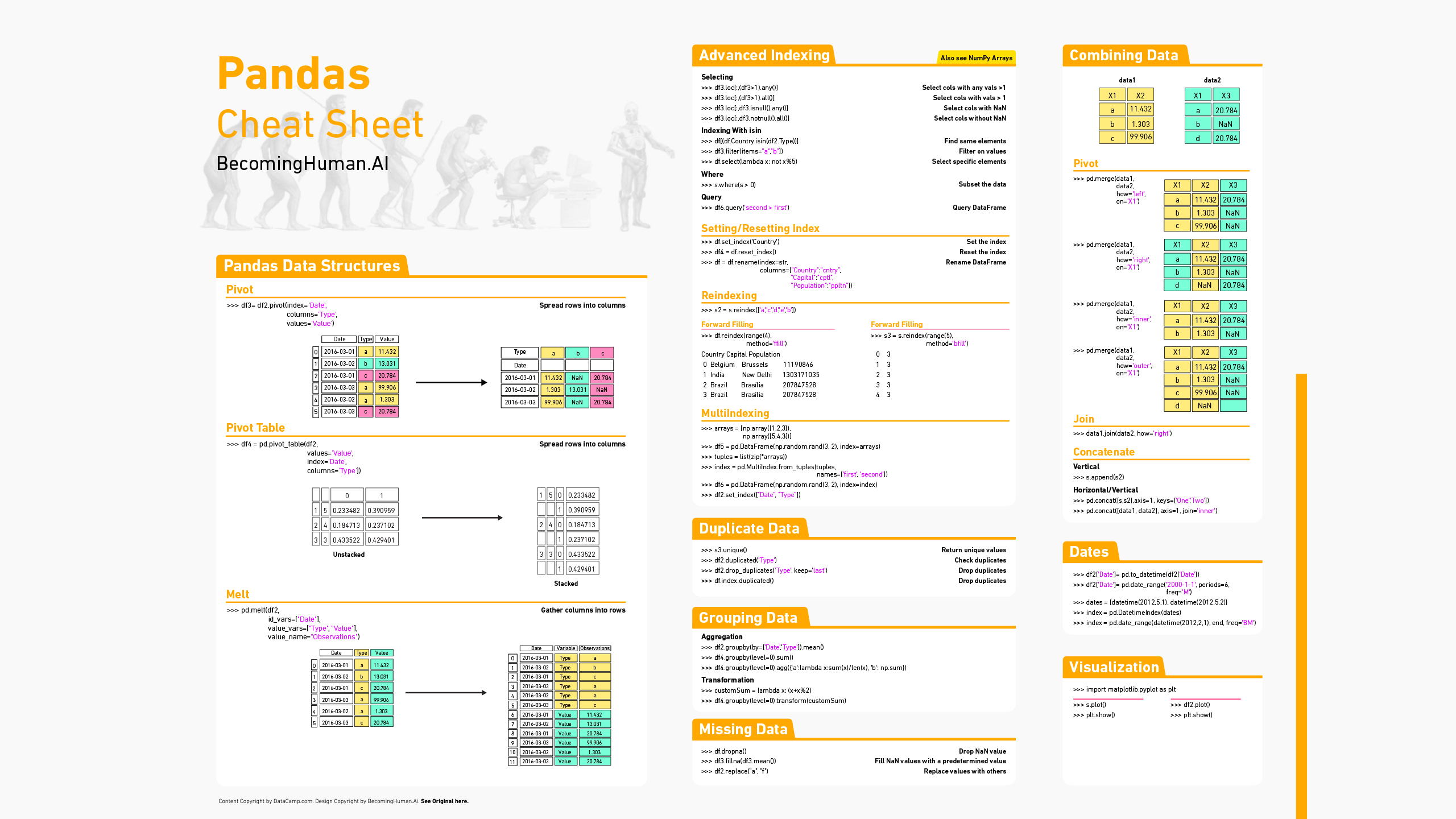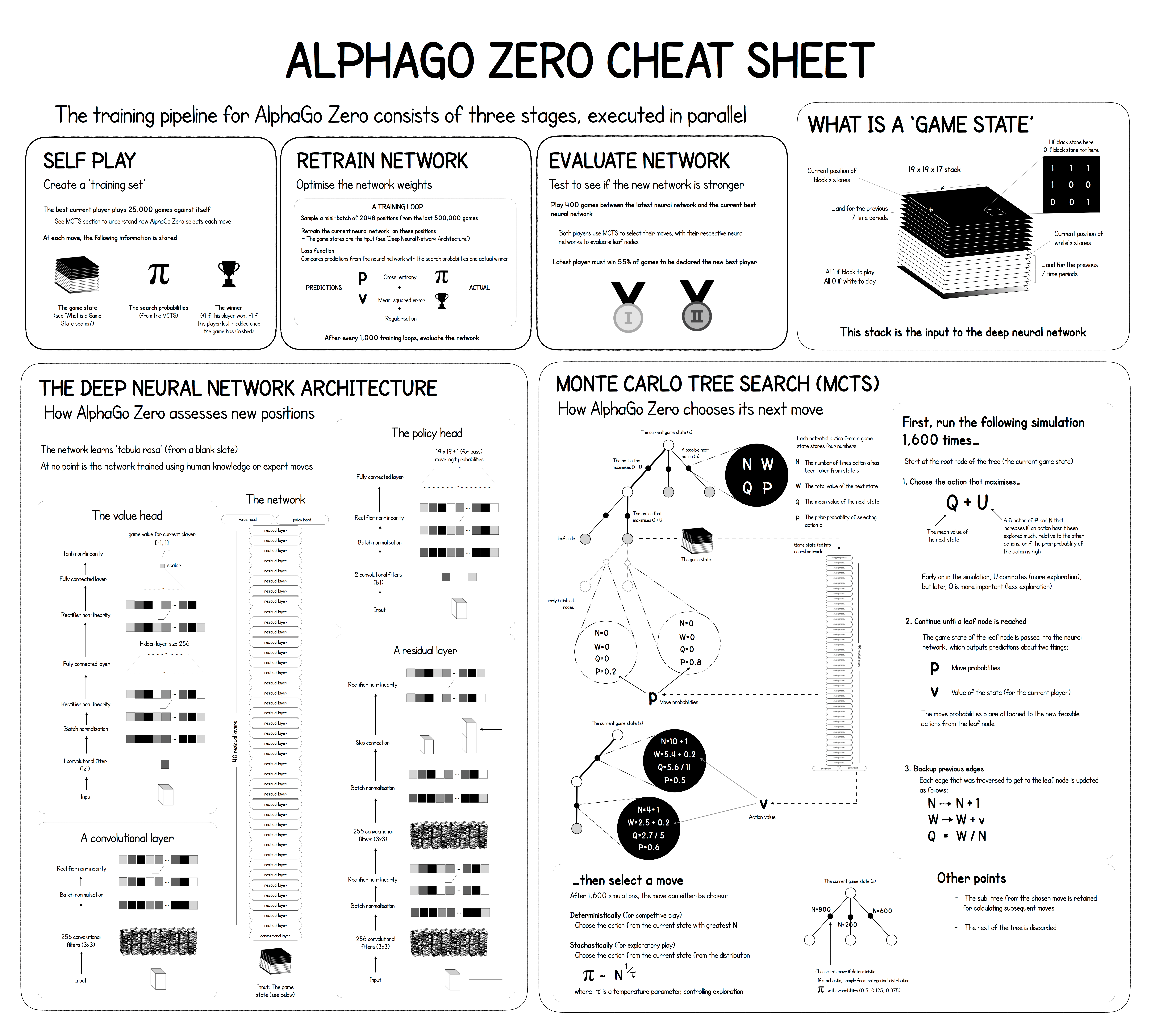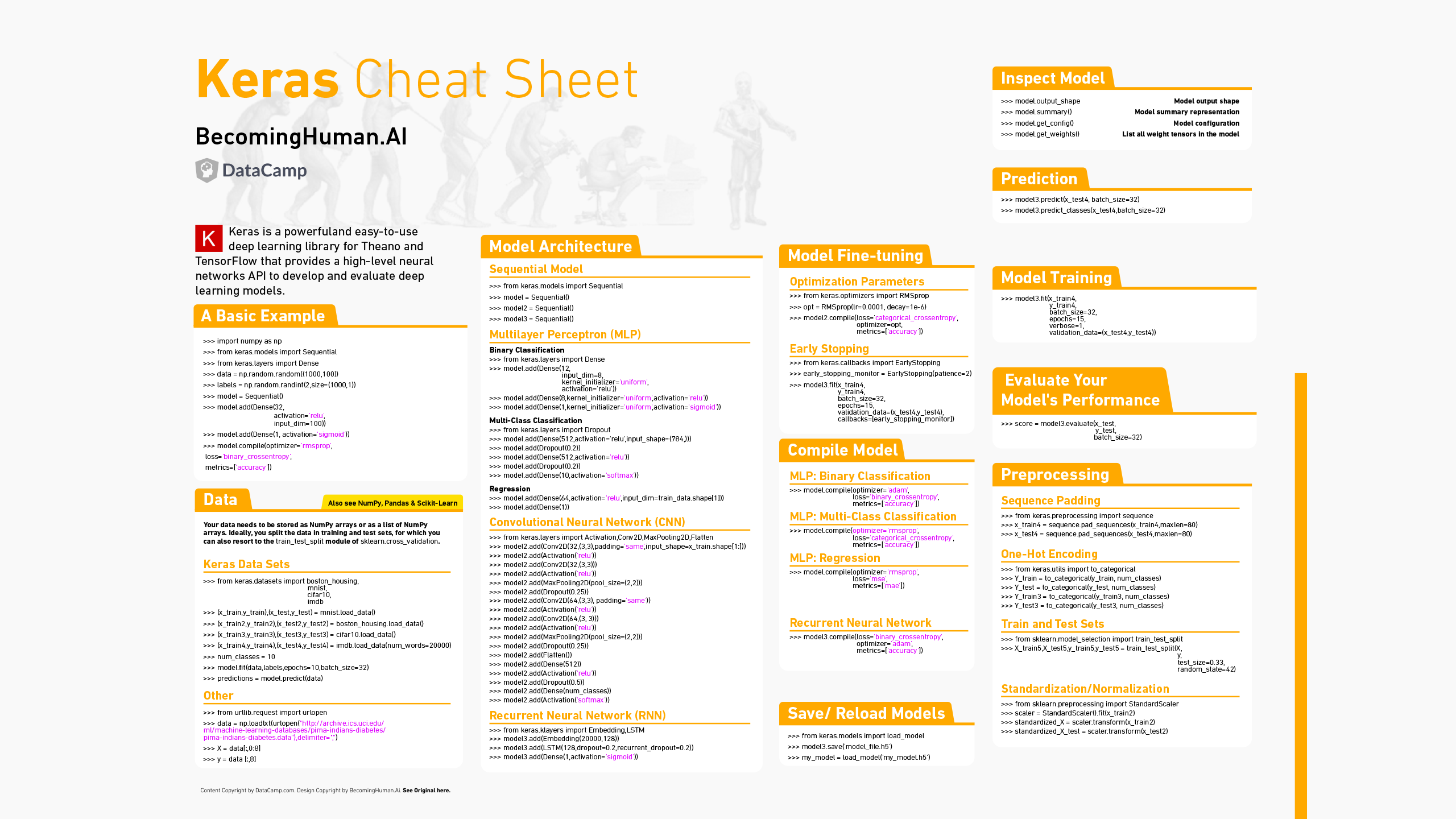Keras Cheat Sheet: Deep Learning in Python - Sep 27, 2017. Keras is a Python deep learning library for Theano and TensorFlow. The package is easy to use and powerful, as it provides users with a high-level neural networks API to develop and evaluate deep learning models. Deep Learning with Keras Cheatsheet Keras is a high-level neural networks API developed with a focus on enabling fast experimentation. Keras Cheat Sheet Posted on December 21, 2017 by David Calloway If you use keras (if you don’t, you should!) in your deep learning projects, there is a nice cheat sheet that is worth printing out and keeping near your computer. It summarizes many of the key things you will want to do to create and update a keras project. Keras Cheat Sheet: Neural Networks in Python Python For Data Science Cheat Sheet: Keras Keras is a powerful and easy-to-use deep learning library for Theano and TensorFlow that provides a high-level neural networks API to develop and evaluate deep learning models.
© TechRepublic TensorFlow: A cheat sheetTensorFlow was originally a deep learning research project of the Google Brain Team that has since become--by way of collaboration with 50 teams at Google--a new, open source library deployed across the Google ecosystem, including Google Assistant, Google Photos, Gmail, search, and more. With TensorFlow in place, Google is able to apply deep learning across numerous areas using perceptual and language-understanding tasks. (Note: This article about TensorFlow is also available as a free PDF download.)
This cheat sheet is an easy way to get up to speed on TensorFlow. We'll update this guide periodically when news and updates about TensorFlow are released.
SEE: How to build a successful developer career (free PDF) (TechRepublic)
Executive summary
- What is TensorFlow? Google has the single greatest machine learning infrastructure in the world, and with TensorFlow, Google now has the ability to share that. TensorFlow is an open source library of tools that enable software developers to apply deep learning to their products.
- Why does TensorFlow matter? AI has become crucial to the evolution of how users interact with services and devices. Having such a powerful set of libraries available can enable developers to include this powerful deep learning evolution to their products.
- Who does TensorFlow affect? TensorFlow will have a lasting effect on developers and users. Since the library was made open source, it is available to all developers, which means their products can be significantly enhanced to bring a higher level of intelligence and accuracy to their products.
- When was TensorFlow released? TensorFlow was originally released November 9, 2015, and the stable release was made available on February 15, 2017. Google has now released TensorFlow 2.4, which includes a number of new features and profiler tools.
- How do I start using TensorFlow? Developers can download the source code from the TensorFlow GitHub repository. Users are already seeing its effects in the Google ecosystem.
SEE: How to implement AI and machine learning (ZDNet special feature) | Download the free PDF version (TechRepublic)
What is TensorFlow?
When you have a photo of the Eiffel Tower, Google Photos can identify the image. This is possible thanks to deep learning and developments like TensorFlow. Prior to TensorFlow there was a division between the researchers of machine learning and those developing real products; that division made it challenging for developers to include deep learning in their software. With TensorFlow, that division is gone.
Tensorflow Keras Cheat Sheet

TensorFlow delivers a set of modules (providing for both Python and C/C++ APIs) that enable constructing and executing TensorFlow computations, which are then expressed in stateful data flow graphs. These graphs make it possible for applications like Google Photos to become incredibly accurate at recognizing locations in images based on popular landmarks.
SEE: All of TechRepublic's cheat sheets and smart person's guides
In 2011, Google developed a product called DistBelief that worked on the positive reinforcement model. The machine would be given a picture of a cat and asked if it was a picture of a cat. If the machine guessed correctly, it was told so. An incorrect guess would lead to an adjustment so that it could better recognize the image.
TensorFlow improves on this concept by sorting through layers of data called Nodes. Diving deeper into the layers would allow for more and complex questions about an image. For example, a first-layer question might simply require the machine to recognize a round shape. In deeper layers, the machine might be asked to recognize a cat's eye. The flow process (from input, through the layers of data, to output) is called a tensor..hence the name TensorFlow.
What is TensorFlow 2.0?
Google is in the process of rolling out TensorFlow 2.0, which includes the following improvements:
- Helps make API components integrate better with tf.keras (a high-level interface for neural networks that runs on top of multiple backends).
- Includes TensorFlow.js version 1.0, which allows the use of off-the-shelf JavaScript models, can retrain existing JS models, and enables the building and training of models directly in JavaScript.
- Includes TensorFlow Federated, which is an open source framework for experimenting with machine learning (and other computations) using decentralized data.
- Includes TF Privacy, a library for training machine learning models with a focus on privacy for training data.
- Features eager execution, which is an imperative programming environment that evaluates operations immediately, without building graphs before returning concrete values.
- Uses tf.function, which allows you to transform a subset of Python syntax into portable, high-performance graphs, and improves performance and deployability of eager execution.
- Advanced experimentation will be made possible with new extensions Ragged Tensors (the TensorFlow equivalent of nested variable-length lists), TensorFlow Probability (a Python library built on TensorFlow that makes it easy to combine probabilistic models and deep learning), and Tensor2Tensor (a library of deep learning models and datasets).
- A conversion tool that automatically updates TensorFlow 1.x Python code so that it can be used with TensorFlow 2.0 compatible APIs (and flags cases where said code cannot be automatically converted).
SEE: Free machine learning courses from Google, Amazon, and Microsoft: What do they offer? (TechRepublic Premium) Focusky download for mac.
Why does TensorFlow matter?

Machine learning is the secret sauce for tomorrow's innovation. Machine learning, also called deep learning, is considered a class of algorithms that:
- Use many layers of nonlinear processing units for feature extraction and transformation; and
- are based on the learning of multiple levels of features or representations of the data; and
- learn multiple levels of representation corresponding to different levels of abstraction.
More about Open Source
Thanks to machine learning, software and devices continue to become smarter. Filezilla client for mac download. With today's demanding consumers and the rise of big data, this evolution has become tantamount to the success of a developer and their product. And because TensorFlow was made open source, it means anyone can make use of this incredible leap forward brought to life by Google. In fact, TensorFlow is the first serious framework for deep learning to be made available through the Apache 2.0 license.
With developers and companies able to use the TensorFlow libraries, more and more applications and devices will become smarter, faster, and more reliable. TensorFlow will be able to sort through vast numbers of images at an unprecedented rate.
Because Google made TensorFlow open source, the libraries can be both improved upon and expanded into other languages such as Java, Lua, and R. This move brings machine learning (something heretofore only available to research institutes) to every developer, so they can teach their systems and software to recognize images or translate speech. That's big.
Who does TensorFlow affect?
TensorFlow not only makes it possible for developers to include the spoils of deep learning into their products, but it makes devices and software significantly more intelligent and easier to use. In our modern, mobile, and 24/7 connected world, that means everyone is affected. Software designers, developers, small businesses, enterprises, and consumers are all affected by the end result of deep learning. The fact that Google created a software library that dramatically improves deep learning is a big win for all.
SEE: Research: Companies lack skills to implement and support AI and machine learning (TechRepublic Premium)
When was TensorFlow released?
TensorFlow was originally released November 9, 2015, and the stable release was made available on February 15, 2017. TensorFlow 2.0 alpha is available now, with the public preview coming soon. You can learn more about the TensorFlow 2.0 alpha in the official Get Started with TensorFlow guide.
The libraries, APIs, and development guides are available now, so developers can begin to include TensorFlow into their products. Users are already seeing the results of TensorFlow in the likes of Google Photos, Gmail, Google Search, Google Assistant, and more.
SEE: Git guide for IT pros (free PDF) (TechRepublic)
What new features are found in TensorFlow 2.4?
Among the new features found in the latest release of TensorFlow include:
- The tf.distribute module now includes experimental support for asynchronous training models with ParameterServerStrategy and custom training loops. In order to get started with this strategy, read through this Parameter Server Training tutorial, which demonstrates how to setup ParameterServerStrategy.
MultiWorkerMirroredStrategy is now a part of the stable API and implements distributed training with synchronous data parallelism.
The Karas mixed precision API is now part of the stable API and allows for the user of 16-bit and 32-bit floating point types.
The tf.keras.optimizers.Optimizer has been refactors, enabling the user of model.fit or custom training loops to write code that will work with any optimizer.
The experimental support of a NumPy API subset, tf.experimental.numpy, has been introduced which enables developers to run TensorFlow accelerated NumPy code.
New profiler tools have been added so developers can measure the training performance and resource consumption of TensorFlow models.
TensorFlow now runs with CUDA 11 and cuDNN 8, which enables support for NVIDIA Ampere GPU architecture. No straight roads steam.
Competitors to TensorFlow

TensorFlow isn't alone in the deep learning field; in fact, there are a number of other companies with machine learning frameworks, including the following.

SEE: Linux service control commands (TechRepublic Premium)
How do I start using TensorFlow?
The first thing any developer should do is read the TensorFlow Getting Started guide, which includes a TensorFlow Core Tutorial. If you're new to machine learning, make sure to check out the following guides:
Developers can install TensorFlow on Linux, Mac, and Windows (or even install from source), or check out their various tools from the official TensorFlow GitHub page.
Finally, developers can take advantage of all the TensorFlow guides:
Also see
- IT leader's guide to deep learning (TechRepublic Premium)
- Building the bionic brain (free PDF) (TechRepublic)
- Hiring Kit: Autonomous Systems Engineer (TechRepublic Premium)
- What is AI? Everything you need to know about Artificial Intelligence (ZDNet)
- Artificial Intelligence: More must-read coverage (TechRepublic on Flipboard)
Complete List of Cheat Sheets and Infographics for Artificial intelligence (AI), Neural Networks, Machine Learning, Deep Learning and Big Data.
Content Summary
Neural Networks
Neural Networks Graphs
Machine Learning Overview
Machine Learning: Scikit-learn algorithm
Scikit-Learn
Machine Learning: Algorithm Cheat Sheet
Python for Data Science
TensorFlow
Keras
Numpy
Pandas
Data Wrangling
Data Wrangling with dplyr and tidyr
Scipy
Matplotlib
Data Visualization
PySpark
Big-O
Resources
Neural Networks
Artificial neural networks (ANN) or connectionist systems are computing systems vaguely inspired by the biological neural networks that constitute animal brains. The neural network itself is not an algorithm, but rather a framework for many different machine learning algorithms to work together and process complex data inputs. Such systems “learn” to perform tasks by considering examples, generally without being programmed with any task-specific rules.
Neural Networks Graphs
Graph Neural Networks (GNNs) for representation learning of graphs broadly follow a neighborhood aggregation framework, where the representation vector of a node is computed by recursively aggregating and transforming feature vectors of its neighboring nodes. Many GNN variants have been proposed and have achieved state-of-the-art results on both node and graph classification tasks.
Machine Learning Overview
Machine learning (ML) is the scientific study of algorithms and statistical models that computer systems use to progressively improve their performance on a specific task. Machine learning algorithms build a mathematical model of sample data, known as “training data”, in order to make predictions or decisions without being explicitly programmed to perform the task. Machine learning algorithms are used in the applications of email filtering, detection of network intruders, and computer vision, where it is infeasible to develop an algorithm of specific instructions for performing the task.
Machine Learning: Scikit-learn algorithm
This machine learning cheat sheet will help you find the right estimator for the job which is the most difficult part. The flowchart will help you check the documentation and rough guide of each estimator that will help you to know more about the problems and how to solve it.
Scikit-Learn
Scikit-learn (formerly scikits.learn) is a free software machine learning library for the Python programming language. It features various classification, regression and clustering algorithms including support vector machines, random forests, gradient boosting, k-means and DBSCAN, and is designed to interoperate with the Python numerical and scientific libraries NumPy and SciPy.
Machine Learning: Algorithm Cheat Sheet
This machine learning cheat sheet from Microsoft Azure will help you choose the appropriate machine learning algorithms for your predictive analytics solution. First, the cheat sheet will asks you about the data nature and then suggests the best algorithm for the job.
Python for Data Science
TensorFlow
In May 2017 Google announced the second-generation of the TPU, as well as the availability of the TPUs in Google Compute Engine. The second-generation TPUs deliver up to 180 teraflops of performance, and when organized into clusters of 64 TPUs provide up to 11.5 petaflops.
Keras
In 2017, Google’s TensorFlow team decided to support Keras in TensorFlow’s core library. Chollet explained that Keras was conceived to be an interface rather than an end-to-end machine-learning framework. It presents a higher-level, more intuitive set of abstractions that make it easy to configure neural networks regardless of the backend scientific computing library.

Numpy
NumPy targets the CPython reference implementation of Python, which is a non-optimizing bytecode interpreter. Mathematical algorithms written for this version of Python often run much slower than compiled equivalents. NumPy address the slowness problem partly by providing multidimensional arrays and functions and operators that operate efficiently on arrays, requiring rewriting some code, mostly inner loops using NumPy.
Python Machine Learning Cheat Sheet
Pandas
The name ‘Pandas’ is derived from the term “panel data”, an econometrics term for multidimensional structured data sets.
Data Wrangling
Machine Learning Cheat Sheet
The term “data wrangler” is starting to infiltrate pop culture. In the 2017 movie Kong: Skull Island, one of the characters, played by actor Marc Evan Jackson is introduced as “Steve Woodward, our data wrangler”.
Data Wrangling with dplyr and tidyr
Scipy
SciPy builds on the NumPy array object and is part of the NumPy stack which includes tools like Matplotlib, pandas and SymPy, and an expanding set of scientific computing libraries. This NumPy stack has similar users to other applications such as MATLAB, GNU Octave, and Scilab. The NumPy stack is also sometimes referred to as the SciPy stack.
Matplotlib
matplotlib is a plotting library for the Python programming language and its numerical mathematics extension NumPy. It provides an object-oriented API for embedding plots into applications using general-purpose GUI toolkits like Tkinter, wxPython, Qt, or GTK+. There is also a procedural “pylab” interface based on a state machine (like OpenGL), designed to closely resemble that of MATLAB, though its use is discouraged. SciPy makes use of matplotlib. pyplot is a matplotlib module which provides a MATLAB-like interface. matplotlib is designed to be as usable as MATLAB, with the ability to use Python, with the advantage that it is free.
Data Visualization
PySpark
Big-O
Big O notation is a mathematical notation that describes the limiting behavior of a function when the argument tends towards a particular value or infinity. It is a member of a family of notations invented by Paul Bachmann, Edmund Landau and others, collectively called Bachmann–Landau notation or asymptotic notation.
Resources
Big-O Algorithm Cheat Sheet
Bokeh Cheat Sheet
Data Science Cheat Sheet
Data Wrangling Cheat Sheet
Data Wrangling
Ggplot Cheat Sheet
Keras Cheat Sheet
Keras
Machine Learning Cheat Sheet
Machine Learning Cheat Sheet
ML Cheat Sheet
Matplotlib Cheat Sheet
Matpotlib
Neural Networks Cheat Sheet
Neural Networks Graph Cheat Sheet
Neural Networks
Numpy Cheat Sheet
NumPy
Pandas Cheat Sheet
Pandas
Pandas Cheat Sheet
Pyspark Cheat Sheet
Scikit Cheat Sheet
Scikit-learn
Scikit-learn Cheat Sheet
Scipy Cheat Sheet
SciPy
TesorFlow Cheat Sheet
Tensor Flow
Course Duck > The World’s Best Machine Learning Courses & Tutorials in 2020
Tag: Machine Learning, Deep Learning, Artificial Intelligence, Neural Networks, Big Data
Related posts:
